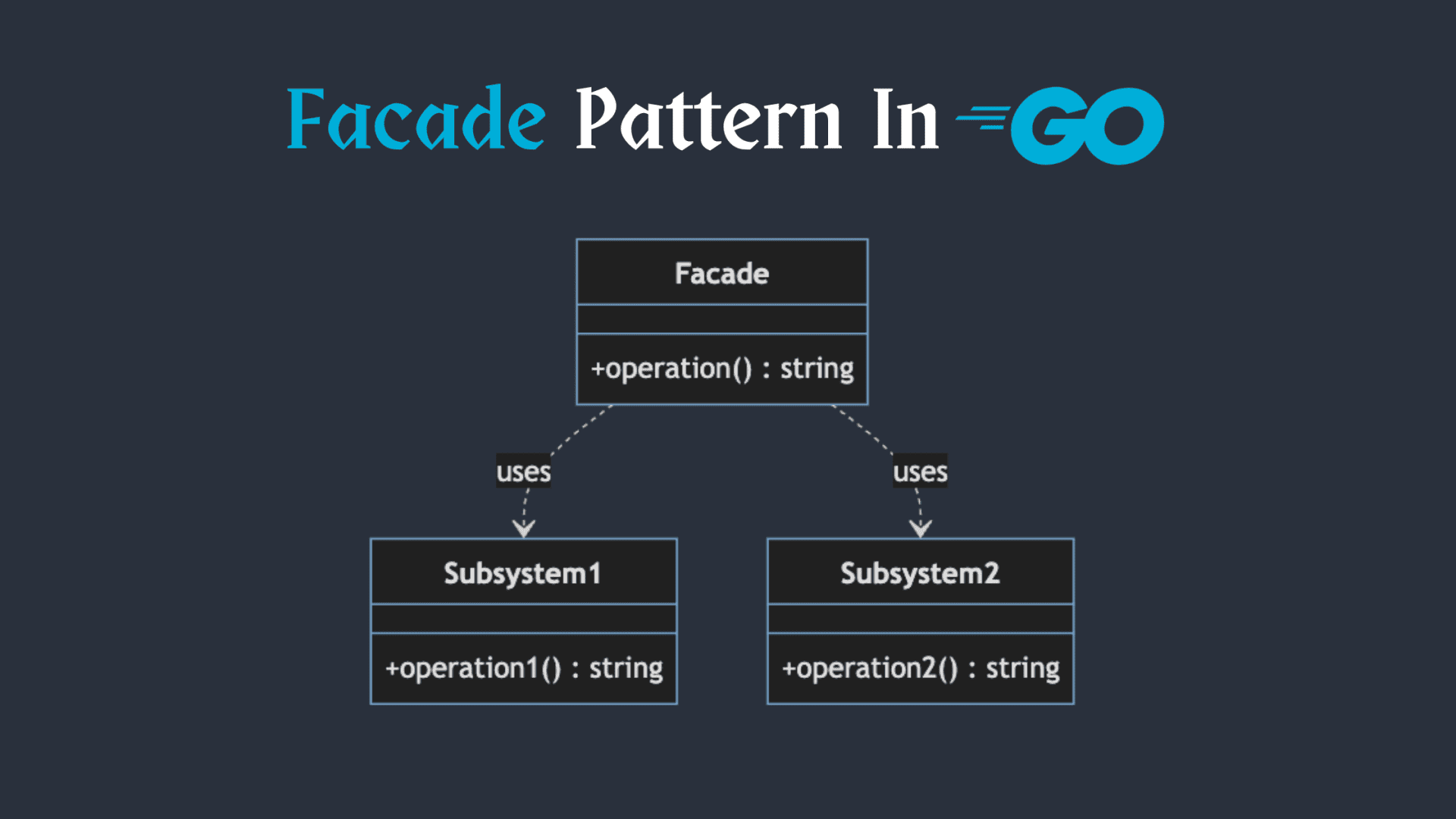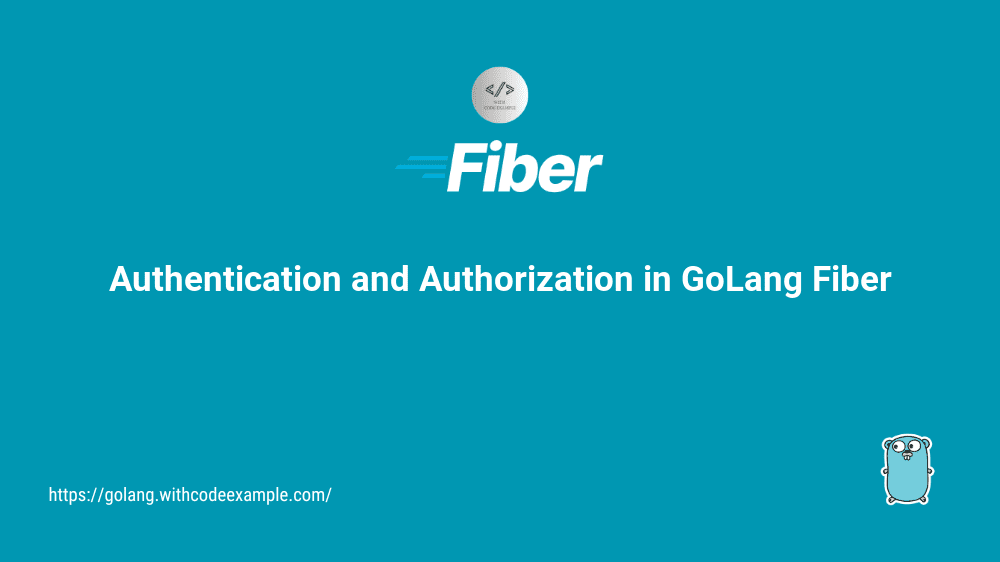Simplifying Go Applications with the Facade Pattern
- With Code Example
- April 12, 2024
The Facade Pattern: A Simple Solution to Complexity in Go
While in software engineering, a developer must code to keep his or her codes clean, modular and easy to maintain. Intricacy of apps is a great problem as there is more work in maintaining different units. This is where design patterns are actively employed, they are the tools which help to solve the problems of common architectural design problems. This is a scheme that requires just a single method that has the ability to interact with multiple underlying subsystems.

Understanding the Facade Pattern
The Facade Pattern is a structural design pattern which provides facile access to the interface of subsystem according to certain interfaces instead of many interfaces. It simplifies the core functionality and masks this complexity generating the facade of a unified interface to the client. Specifically, The Facade Pattern in Go can be used in the situations, the complex system should operate through a simplified interphase.
classDiagram
class Facade {
+ operation() string
}
class Subsystem1 {
+ operation1() string
}
class Subsystem2 {
+ operation2() string
}
Facade ..> Subsystem1 : uses
Facade ..> Subsystem2 : uses
Let’s step through an easy to understand scenario and see the Facade Pattern is applied in a Go app.
package main
import "fmt"
// SubsystemA represents a complex subsystem
type SubsystemA struct{}
func (s *SubsystemA) OperationA1() {
fmt.Println("SubsystemA: OperationA1")
}
func (s *SubsystemA) OperationA2() {
fmt.Println("SubsystemA: OperationA2")
}
// SubsystemB represents another complex subsystem
type SubsystemB struct{}
func (s *SubsystemB) OperationB1() {
fmt.Println("SubsystemB: OperationB1")
}
func (s *SubsystemB) OperationB2() {
fmt.Println("SubsystemB: OperationB2")
}
// Facade provides a simple interface to the complex subsystems
type Facade struct {
subsystemA *SubsystemA
subsystemB *SubsystemB
}
func NewFacade() *Facade {
return &Facade{
subsystemA: &SubsystemA{},
subsystemB: &SubsystemB{},
}
}
func (f *Facade) Operation() {
fmt.Println("Facade: initializing operations")
f.subsystemA.OperationA1()
f.subsystemB.OperationB1()
fmt.Println("Facade: completed operations")
}
func main() {
facade := NewFacade()
facade.Operation()
}
In this angular bracket (<), we have two complex subsystems (SubsystemA and SubsystemB) and more than one operation. Next, we introduce the Facade class, which allows us to access only the necessary subsystems and hide the underlying complexity of them. The Facade has a Client that deals with it and the work gets delegated to the necessary subsystems through it.
Benefit with the use of Facade pattern
The Facade Pattern offers several benefits when applied to Go applications:The Facade Pattern offers several benefits when applied to Go applications:
**Simplified Interface:Simplification of client- interface interaction is a key feature of the facade pattern which is called by the fact that it creates a unified interface to a complex subsystem. Consumers will interact with the Facade, thus hiding the subsystem intricacies. Consumers will only deal with the Facade, hiding away in it the subsystem complexities.
Modularity: This Facade Pattern enables to hide clients interactions with system into a simplified interface, turning the system lessfriable and extensible. This will facilitate the modus operandi where one would be able to revamp or substitute parts of the system without adversely impacting the source code of the client.
Reduced Coupling: The Facade Pattern lets us remove the subsystem from the direct control of the class that manages a whole system. As a result, the two systems are not tightly coupled by the Facade which favorizes separation of concerned. This characteristic means that the code would be more appropriate for maintenance and its understanding period.
Improved Readability: Implementing facades will help to render the code more readable by supplying the user of the software with a simple, yet clear, interface to the subsystem. Besides, this sets a convenient environment for developers to grasp how among the supporting parts function.
Roasted in Real World Scenarios - Facade Designing См.
Now that we possess some knowledge about the Facade Pattern , let’s discover how it can be applied to real-life cases.
Imagine an application that communicates with several backend services: a database, a cache, a local server on personal computer, and an external API. This includes a wide range of hurdles which Services may acquire. The Facade Pattern helps us in making the interface more rational by hiding its complexity.
package main
import "fmt"
// Database represents a database subsystem
type Database struct{}
func (d *Database) Query(query string) {
fmt.Printf("Database: executing query '%s'\n", query)
}
// Cache represents a cache subsystem
type Cache struct{}
func (c *Cache) Get(key string) string {
fmt.Printf("Cache: retrieving value for key '%s'\n", key)
return "cached value"
}
// ExternalAPI represents an external API subsystem
type ExternalAPI struct{}
func (e *ExternalAPI) Call(endpoint string) {
fmt.Printf("ExternalAPI: calling endpoint '%s'\n", endpoint)
}
// Facade provides a simplified interface to the backend services
type BackendFacade struct {
database *Database
cache *Cache
externalAPI *ExternalAPI
}
func NewBackendFacade() *BackendFacade {
return &BackendFacade{
database: &Database{},
cache: &Cache{},
externalAPI: &ExternalAPI{},
}
}
func (f *BackendFacade) GetData() {
fmt.Println("BackendFacade: fetching data")
f.database.Query("SELECT * FROM data")
f.cache.Get("data_cache_key")
f.externalAPI.Call("api/endpoint")
fmt.Println("BackendFacade: data fetched successfully")
}
func main() {
facade := NewBackendFacade()
facade.GetData()
}
Here we have three back-end services: Database , Cache and ExternalAPI , all of them being a service with their own operations. Next, we produce a BackendFacade class that operates as a compact modeling of the services. A client can connect with BackendFacade, which is the intermediary and sends the requests to the backend services through the behind-the-scenes “delegation”.
Conclusion
The Facade Pattern is indeed a valuable tool which facilitates hiding the complexity of systems, enhances modularity and system maintainability, and makes the overall Go app development process easier and more manageable. The Facade Pattern accomplishes this task by providing the cohesive front that unites these sub-system interfaces, thereby decreasing the system dependencies, and increasing its modularity while making the system more understandable. Is your code within the limits of a small project or you’re working on just a large-scale application? Just making the Facade Pattern a part of your work could simplify it and increase the maintainability of it.





